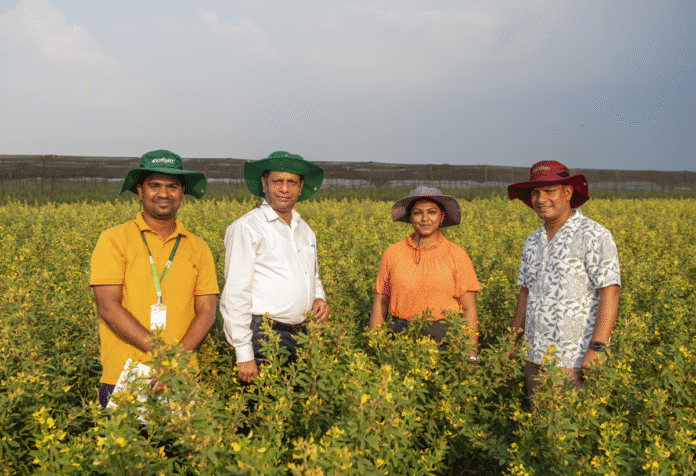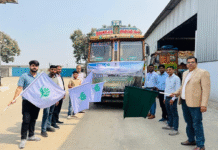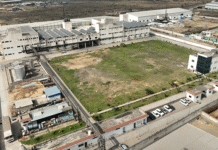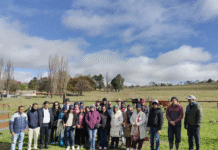
In a significant advancement for Indian agriculture, scientists at the International Crops Research Institute for the Semi-Arid Tropics (ICRISAT) have developed ICPV 25444—a first-of-its-kind pigeonpea cultivar that can withstand high summer temperatures and mature in just 125 days.
This heat-tolerant, photo- and thermo-insensitive cultivar has been successfully tested in Karnataka, Odisha, and Telangana states in India, demonstrating yields of 2 tons per hectare. Crucially, it represents a breakthrough in pigeonpea cultivation, enabling the crop to be grown not only during the traditional rainy (kharif) season but also in the extreme heat of summer, where temperatures reach up to 45°C.
New era for pigeonpea in India
Until now, pigeonpea has been limited to specific seasons due to its sensitivity to photoperiod and temperature. ICPV 25444, which is currently under field trials marks a turning point—transforming pigeonpea into an all-season crop and opening new possibilities for Indian farmers.
“This breakthrough in developing a summer-adapted pigeonpea cultivar is a shining example of what science can achieve when driven by urgency and purpose. By transforming pigeonpea into an all-season crop, our scientists have delivered a timely solution with the potential to address pulse shortages and climate challenges facing farmers across India,” said Dr Himanshu Pathak, director general, ICRISAT.
Foundation of speed breeding
“This breakthrough was made possible by the world’s first pigeonpea speed-breeding protocol, developed by ICRISAT in 2024. The protocol enabled researchers to grow up to four generations per year, reducing the time required to develop a new variety from 15 years to just five,” said Stanford Blade, deputy director general-research and innovation, ICRISAT.
ICRISAT has unveiled the world’s first speed-breeding protocol for pigeonpea—an achievement led by Prakash Gangashetty, senior scientist-pigeonpea breeding, and his team.
Developed over a year, the protocol tackled the complex problem of speeding up the generations of crop improvement and reducing the time it took for the advanced cultivar to be submitted for registration trials to 3-4 years.
By growing pigeonpea in controlled environments—and using space-optimized planting in 4-inch pots, scientists grew 18,000 plants per season in a 2,250 sq ft area to maximize seed generation. The process was further enhanced with advanced genomic technologies using the seed-chipping method.
Addressing India’s pulse deficit
India currently produces 3.5 million tons of pigeonpea annually, falling short of the 1.5 million tons needed to meet domestic demand. This results in US$ 800 million worth of imports each year.
The new cultivar supports a dual strategy for boosting domestic production:
Vertical expansion through high-yielding varieties for kharif on 5 million hectares.
Horizontal expansion into rice fallows during rabi and unused summer lands with irrigation, enabled by ICPV 25444’s heat tolerance and short duration.
Heat-tolerant pigeonpea cultivars offer strong potential for expanding cultivation in India, particularly in 2–3 million ha of tail-end command areas where paddy-paddy, paddy-maize, or paddy-vegetable systems dominate. These regions often face terminal moisture stress, leading to uneconomic second-crop yields. Pigeonpea, with a yield potential of 1.5–2 tons/ha, can enhance profitability by USD 234 (₹20,000)/ha. Targeted deployment using remote sensing/GIS, along with improved agronomy and seed systems, could scale adoption to 1 million ha.
Global relevance and future potential
As climate variability continues to challenge traditional farming cycles, ICPV 25444 is a timely innovation. It provides farmers with a climate-resilient, high-value crop that can be grown during increasingly unpredictable seasons—paving the way for more secure livelihoods and sustainable food systems.
“ICRISAT is developing a global trait diversity panel from the entire pigeonpea genebank collection (13,000 accessions) using the speed-breeding platform. This positions the institute to support breeding programs globally, with active partnerships in Asia, Australia, Brazil, Ecuador, and Africa,” said Sean Mayes, global research program director, accelerated crop improvement at ICRISAT.
Field trial report from Bagalkot, Karnataka
“In Bagalkot, Pigeonpea is traditionally cultivated during the kharif (rainy) season. However, upon learning about the cultivar’s tolerance to high temperatures, two farmers— Hanumantha Mirji and Basavaraj Ghanti—expressed interest in cultivating the crop during the summer season. The crop has shown promising growth under high-density planting, and both farmers have reported satisfaction with its performance. The farmers are optimistic about achieving good yields.”
“ICPV 25444 is a boon to farmers, who wish to grow pigeonpea in summer. It matures in four months. No disease and pests were observed in the field. We are happy and will produce more during the summer next year,” said Gururaj Kulkarni.
IndiFoodBev — authentic, impactful and influential
An English-language food and beverage processing and packaging industry B2B platform in print and web, IndiFoodBev is in its third year of publication. It is said that the Indian food and beverage industries represent approximately US$ 900 billion in revenues which implies more than 20% of the country’s GDP. Eliminating the wastage on the farmside can help to deliver more protein to a higher number of the population apart from generating sizable exports. The savings in soil, seeds, water, fertilizer, energy and ultimately food and nutrition could be the most immense contribution that country is poised to make to the moderation of climate change.
To improve your marketing and grow sales to the food and beverage processing and packaging industry, talk to us. Our research and consulting company IppStar [www.ippstar.org] can assess your potential and addressable markets in light of the competition. We can discuss marketing, communication, and sales strategies for market entry and growth.
Suppliers and service providers with a strategy and budget for targeted marketing can discuss using our hybrid print, web, video, and social media channels to create brand recognition linked to market relevance. Our technical writers are ready to meet you and your customers for content.
The second largest producer of fruit and vegetables in the world is continuously expanding processing capacities and delivery systems with appropriate innovative technologies. We cover product and consumer trends, nutrition, processing, research, equipment and packaging from farm to thali. Get our 2025 media kit and recalibrate your role in this dynamic market. Enhance your visibility and relevance to existing markets and turn potential customers into conversations. Ask for a sample copy of our bi-monthly in print or our weekly IndiFoodBev eZine each Wednesday.
For editorial info@ippgroup.in — for advertisement ads1@ippgroup.in and for subscriptions subscription@ippgroup.in
Naresh Khanna – 10 February 2025
Subscribe Now











